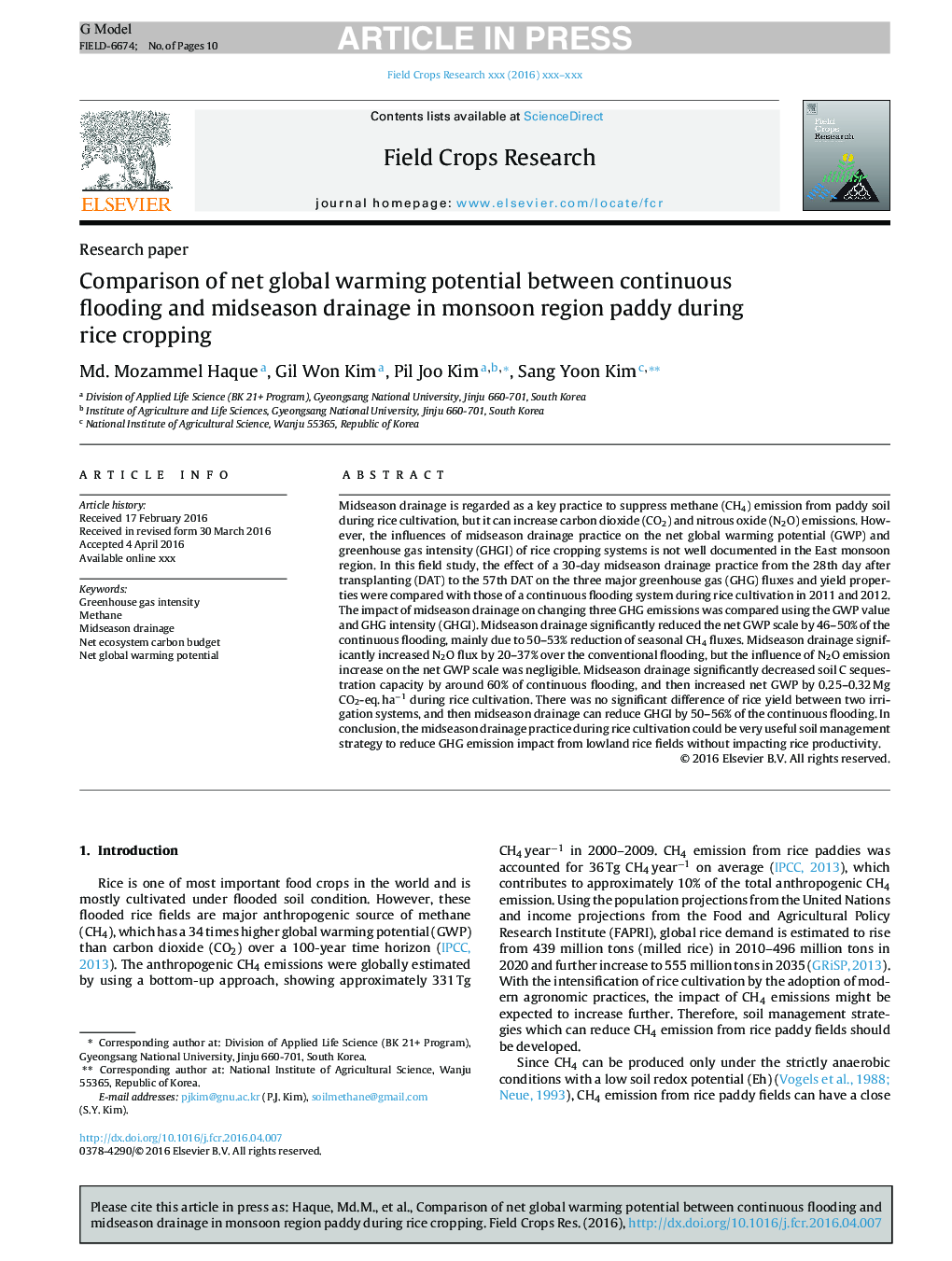| Article ID | Journal | Published Year | Pages | File Type |
|---|---|---|---|---|
| 6374455 | Field Crops Research | 2016 | 10 Pages |
Abstract
Midseason drainage is regarded as a key practice to suppress methane (CH4) emission from paddy soil during rice cultivation, but it can increase carbon dioxide (CO2) and nitrous oxide (N2O) emissions. However, the influences of midseason drainage practice on the net global warming potential (GWP) and greenhouse gas intensity (GHGI) of rice cropping systems is not well documented in the East monsoon region. In this field study, the effect of a 30-day midseason drainage practice from the 28th day after transplanting (DAT) to the 57th DAT on the three major greenhouse gas (GHG) fluxes and yield properties were compared with those of a continuous flooding system during rice cultivation in 2011 and 2012. The impact of midseason drainage on changing three GHG emissions was compared using the GWP value and GHG intensity (GHGI). Midseason drainage significantly reduced the net GWP scale by 46-50% of the continuous flooding, mainly due to 50-53% reduction of seasonal CH4 fluxes. Midseason drainage significantly increased N2O flux by 20-37% over the conventional flooding, but the influence of N2O emission increase on the net GWP scale was negligible. Midseason drainage significantly decreased soil C sequestration capacity by around 60% of continuous flooding, and then increased net GWP by 0.25-0.32 Mg CO2-eq. haâ1 during rice cultivation. There was no significant difference of rice yield between two irrigation systems, and then midseason drainage can reduce GHGI by 50-56% of the continuous flooding. In conclusion, the midseason drainage practice during rice cultivation could be very useful soil management strategy to reduce GHG emission impact from lowland rice fields without impacting rice productivity.
Related Topics
Life Sciences
Agricultural and Biological Sciences
Agronomy and Crop Science
Authors
Md. Mozammel Haque, Gil Won Kim, Pil Joo Kim, Sang Yoon Kim,
